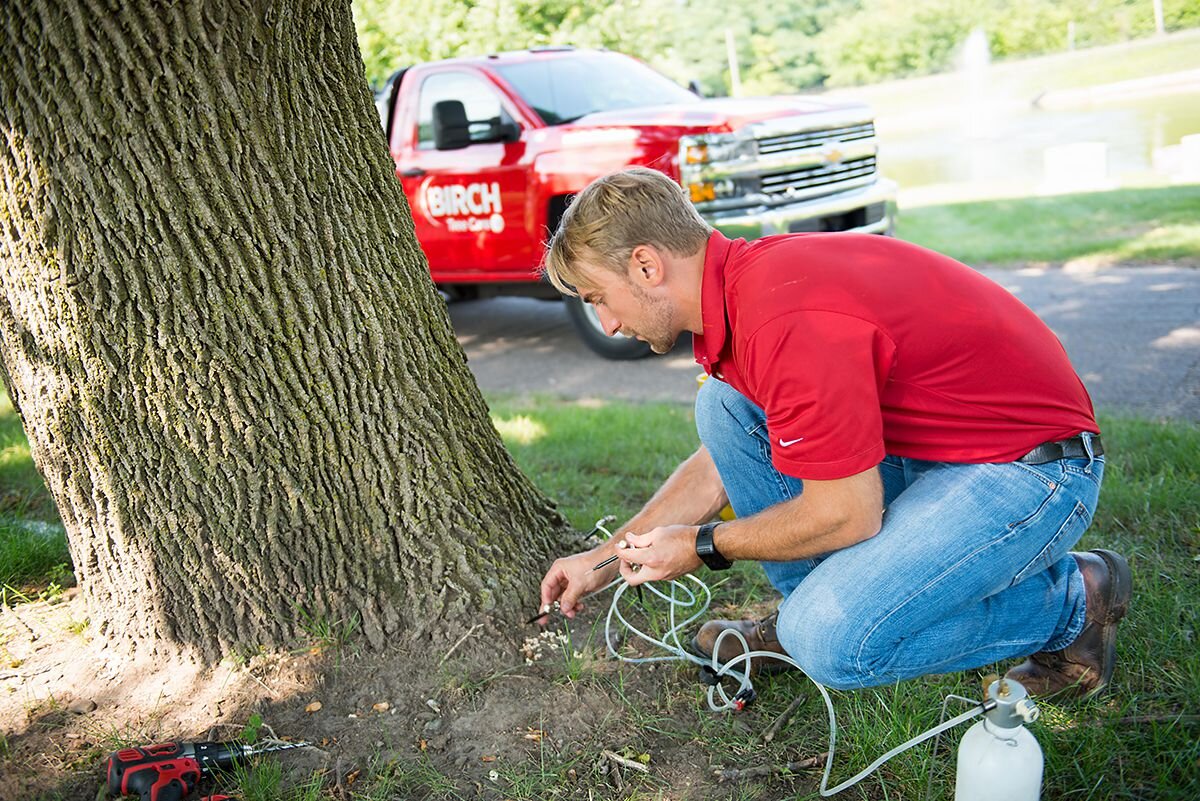Is your Minnesota apple tree showing signs of disease? Apple scab affects countless trees throughout Minneapolis, St. Paul, and surrounding suburbs each year. As certified arborists serving the Twin Cities for over 15 years, we've helped homeowners across Edina, Eden Prairie, and Minnetonka save their trees from this persistent fungal infection.
What Is Apple Scab? Understanding This Common Minnesota Tree Disease
Apple scab (Venturia inaequalis) is a fungal disease that primarily affects apple and crabapple trees throughout the Twin Cities region. Our unique Minnesota climate—with cool, wet springs and humid summers—creates ideal conditions for apple scab to thrive in local landscapes.
The disease not only damages the aesthetic appeal of ornamental trees but can significantly reduce fruit production and tree vigor over time. Left untreated, severe infections may weaken trees and make them susceptible to other problems common in our Minneapolis-St. Paul growing region.
Read Our Other Blogs
Apple Scab Lifecycle in Minnesota's Climate
Understanding how apple scab develops specifically in our Twin Cities climate is crucial for effective treatment:
Fall/Winter (October-March): The fungus overwinters in fallen leaves around your Minneapolis or St. Paul property, waiting for spring conditions
Early Spring (April-May): As temperatures rise to 43-75°F with rainfall (common in Minnesota springs), primary spores release and infect new growth
Late Spring/Early Summer (May-June): Black or brown lesions appear on leaves and developing fruit
Summer (June-August): Secondary infections spread throughout the tree and potentially to neighboring trees
Late Summer/Fall (September-October): Infected leaves drop prematurely, completing the cycle
The prolonged wet periods we often experience in the Twin Cities metropolitan area make our region particularly susceptible to severe apple scab outbreaks.
Identifying Apple Scab on Twin Cities Trees
Before apple scab treatment, proper identification is essential. Here's what to look for in your Minneapolis, Edina, or St. Paul landscape:
On Leaves: Olive-green to brown circular spots that eventually turn black
Leaf Symptoms: Severe infections cause yellowing and premature leaf drop, particularly noticeable in Minnetonka and lakeside properties
On Fruit: Circular dark lesions that may become cracked and corky
Fruit Impact: Misshapen fruit, uneven ripening, and early fruit drop
Timing: First visible in the Twin Cities typically by mid-May, progressing through summer
Minnesota's native crabapples are particularly susceptible, along with many popular apple varieties grown throughout the metro area.
DIY Apple Scab Prevention for Twin Cities Homeowners
While professional care offers the most reliable protection, Minneapolis-St. Paul homeowners can take these steps:
Fall Cleanup: Thoroughly rake and dispose of fallen leaves in Minneapolis yard waste collection (not compost)
Strategic Pruning: Improve air circulation through professional pruning adapted to Minnesota's growing conditions
Water Management: Water at ground level only, especially important in densely planted Twin Cities yards
Resistant Varieties: When replanting, choose scab-resistant varieties suitable for Minnesota's zone 4b climate
Spacing: Plant new trees with adequate spacing for our region's humidity considerations
Professional Consultation: Schedule an assessment with a certified Twin Cities arborist for customized recommendations
These practices are particularly important in Minneapolis and St. Paul neighborhoods with mature tree canopies that can reduce airflow.
Minnesota-Specific Treatment Options
Based on our experience throughout the Twin Cities metro area, these treatment approaches work best in our unique climate:
Organic Options for Minnesota Gardens
Sulfur-based fungicides applied on a 7-10 day schedule (adjust for Twin Cities rainfall patterns)
Neem oil applications for light infections
Baking soda solutions for mild cases (less effective during heavy Minnesota spring rains)
Professional Treatments
Targeted fungicide applications with equipment calibrated for Minnesota tree species
Timing treatments precisely with local bud break and weather patterns
Integrated approaches that consider Minneapolis-St. Paul microclimates
Twin Cities Neighborhoods: Special Considerations
Different areas of the Twin Cities metro face unique challenges with apple scab:
Minneapolis Lakes Area: Higher humidity requires more aggressive prevention
St. Paul Highland Park: Mature trees need specialized equipment for complete coverage
Edina & Eden Prairie: Established landscapes often have multiple susceptible trees in close proximity
Minnetonka & Western Suburbs: Larger properties may require comprehensive management plans
Northern Suburbs: Slightly different timing due to later spring warming
Why Choose Certified Minneapolis Arborists
Our ISA-certified arborists bring specialized knowledge of Twin Cities growing conditions:
Deep understanding of Minnesota's unique climate challenges
Custom treatment plans based on your specific Minneapolis or St. Paul microclimate
Proper timing based on local bud break and weather patterns
Complete property assessment to identify all vulnerable trees
Preventative recommendations specific to your Twin Cities landscape
Contact Your Local Twin Cities Apple Scab Experts
Don't let apple scab damage your valuable landscape trees. Our Minneapolis-based team provides specialized plant health care services throughout the metro area, including Edina, St. Paul, Eden Prairie, and Minnetonka.
Schedule your consultation today for a customized treatment plan designed specifically for your Twin Cities property.



















